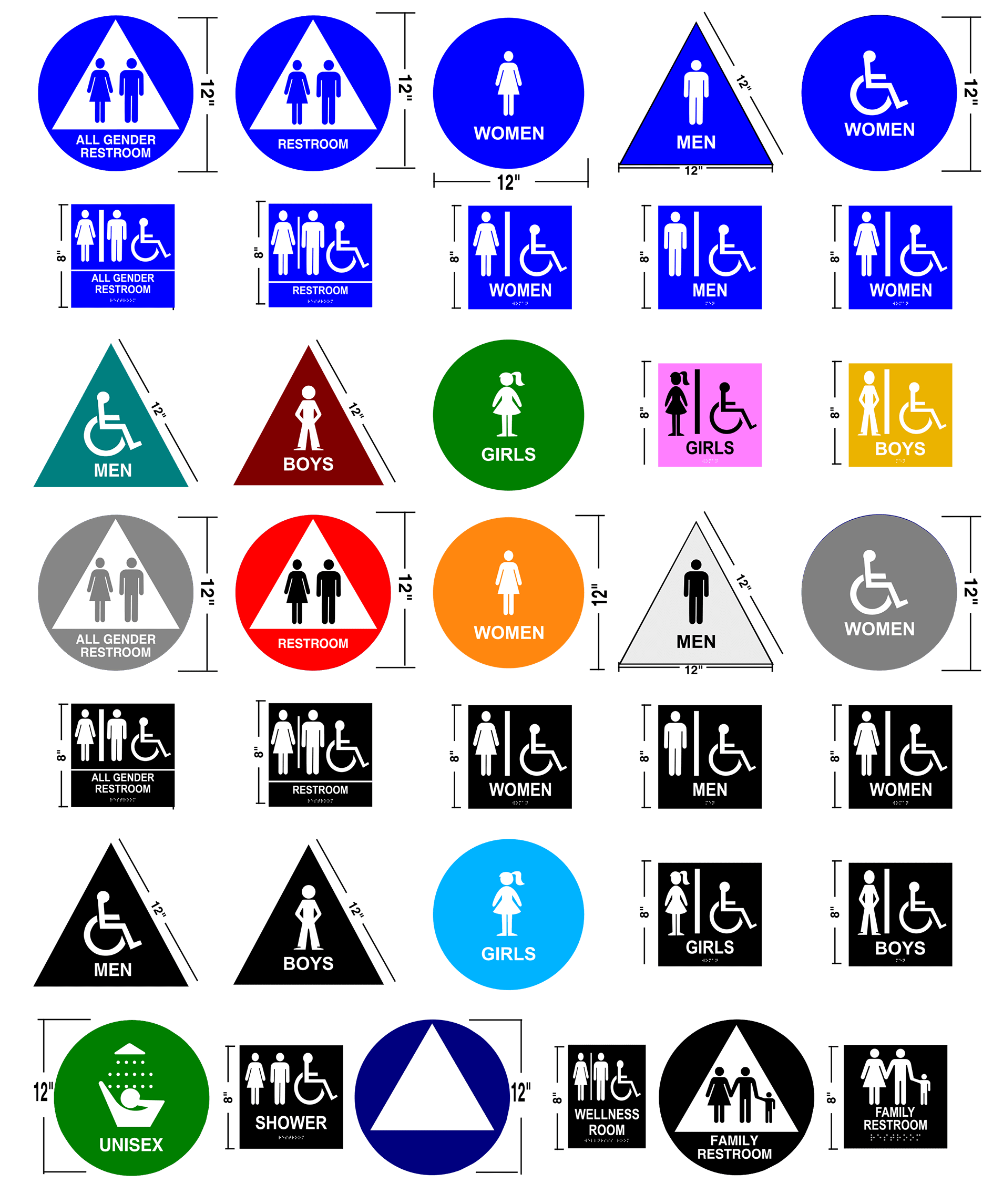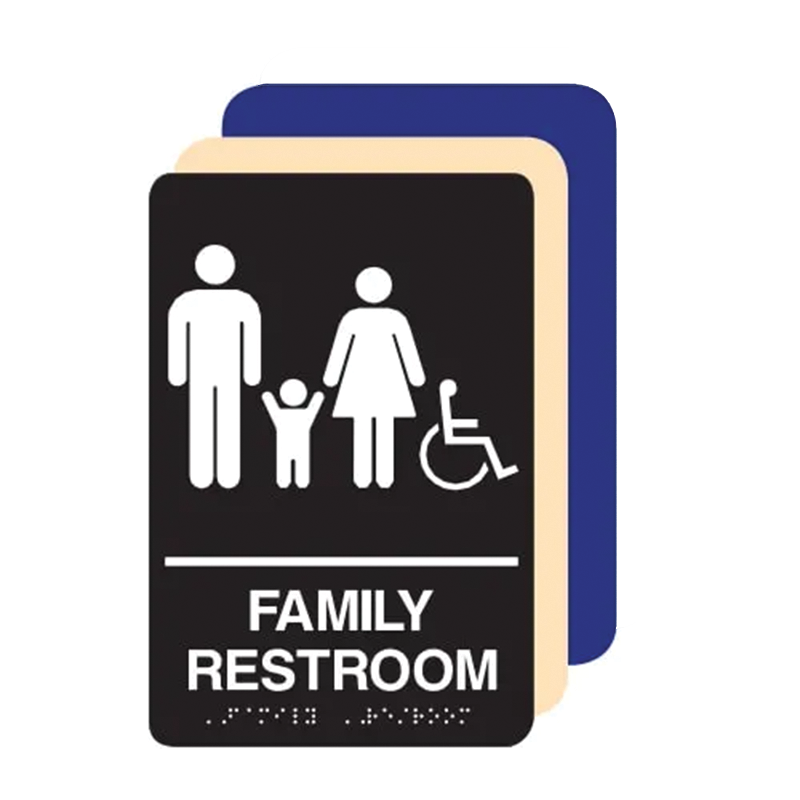The Function of ADA Signs in Adhering To Access Standards
The Function of ADA Signs in Adhering To Access Standards
Blog Article
Checking Out the Trick Attributes of ADA Indicators for Enhanced Ease Of Access
In the realm of availability, ADA signs serve as silent yet powerful allies, making sure that areas are accessible and inclusive for individuals with specials needs. By incorporating Braille and responsive components, these signs break barriers for the visually impaired, while high-contrast shade plans and legible typefaces provide to diverse aesthetic needs.
Relevance of ADA Compliance
Ensuring compliance with the Americans with Disabilities Act (ADA) is important for fostering inclusivity and equal gain access to in public spaces and work environments. The ADA, established in 1990, mandates that all public centers, employers, and transport services accommodate individuals with disabilities, guaranteeing they appreciate the exact same legal rights and opportunities as others. Conformity with ADA requirements not only meets legal obligations but likewise enhances an organization's online reputation by showing its commitment to diversity and inclusivity.
One of the crucial elements of ADA conformity is the application of obtainable signs. ADA indicators are developed to make certain that people with specials needs can easily navigate with spaces and buildings.
In addition, adhering to ADA guidelines can reduce the danger of legal repercussions and prospective fines. Organizations that fall short to follow ADA guidelines may deal with suits or fines, which can be both financially burdensome and damaging to their public picture. Therefore, ADA conformity is essential to fostering an equitable environment for everyone.
Braille and Tactile Elements
The unification of Braille and tactile aspects into ADA signs embodies the concepts of accessibility and inclusivity. These features are critical for people that are blind or visually impaired, enabling them to navigate public rooms with better freedom and confidence. Braille, a tactile writing system, is essential in providing created info in a layout that can be conveniently regarded through touch. It is generally positioned below the matching message on signage to ensure that people can access the details without aesthetic help.
Responsive elements prolong beyond Braille and consist of increased symbols and personalities. These components are developed to be noticeable by touch, allowing people to recognize space numbers, toilets, leaves, and other essential locations. The ADA establishes particular standards regarding the dimension, spacing, and positioning of these responsive aspects to enhance readability and make certain uniformity across different settings.

High-Contrast Color Plans
High-contrast color pattern play an essential duty in boosting the presence and readability of ADA signs for individuals with aesthetic disabilities. These systems are important as they make best use of the distinction in light reflectance in between text and history, making sure that indicators are easily discernible, also from a range. The Americans with Disabilities Act (ADA) mandates using particular color contrasts to fit those with minimal vision, making it a critical facet of conformity.
The effectiveness of high-contrast colors depends on their capability to stand out in various lighting conditions, including dimly lit settings and locations with glow. Normally, dark text on a light history or light message on a dark history is used to achieve optimum contrast. For example, look at here now black text on a white or yellow history offers a stark aesthetic difference that helps in fast recognition and understanding.

Legible Fonts and Text Size
When thinking about the design of ADA signage, the choice of clear font styles and suitable message dimension can not be overemphasized. These components are crucial for making certain that indications come to individuals with visual problems. The Americans with Disabilities Act (ADA) mandates that typefaces should be sans-serif and not italic, oblique, manuscript, highly ornamental, or of unusual form. These requirements aid make certain that the message is easily readable from a distance and that the personalities are distinct to diverse audiences.
The dimension of the text likewise plays a critical role in accessibility. According to ADA guidelines, the minimal message elevation should be 5/8 inch, and it must raise proportionally with seeing range. This is specifically vital in public spaces where signage needs to be checked out rapidly and accurately. Consistency in message size adds to a natural aesthetic experience, helping individuals in navigating atmospheres efficiently.
Moreover, spacing between lines and letters is important to readability. Adequate spacing protects against personalities from showing up crowded, boosting readability. By sticking to these criteria, designers can substantially improve availability, guaranteeing that signage offers its designated purpose for all people, no matter their aesthetic abilities.
Reliable Positioning Strategies
Strategic positioning of ADA signage is important for making best use of access and guaranteeing compliance with lawful standards. Effectively positioned indications direct individuals with impairments properly, assisting in navigation in public rooms. Trick factors to consider include exposure, closeness, and height. ADA standards state that indications should be installed at a height in between 48 to 60 inches from the ground to ensure they are within my latest blog post the line of sight for both standing and seated people. This basic elevation range is critical for inclusivity, making it possible for wheelchair customers and individuals of differing heights to accessibility information easily.
Additionally, indicators need to be put nearby to the latch side of doors to allow very easy identification prior to entrance. Uniformity in indication positioning throughout a center improves predictability, minimizing complication and boosting overall user experience.

Conclusion
ADA signs play an important role in promoting availability by incorporating features that resolve the demands of individuals with handicaps. These aspects jointly promote an inclusive environment, highlighting the importance of ADA conformity in making sure equivalent gain access to for all.
In the realm of availability, ADA indications offer as silent yet effective allies, making certain that rooms are navigable and comprehensive for people with handicaps. The ADA, established in 1990, mandates that all public centers, employers, and transportation solutions fit individuals with disabilities, ensuring they enjoy the same civil liberties and opportunities as others. ADA Signs. ADA signs are created to make sure that people with handicaps can quickly navigate via buildings and rooms. ADA guidelines stipulate that signs must be placed at a height in between 48 to 60 inches from the ground to guarantee they are within the line of view for both standing and seated people.ADA indicators play an important function in promoting ease of access by incorporating attributes that attend to the requirements of people with impairments
Report this page